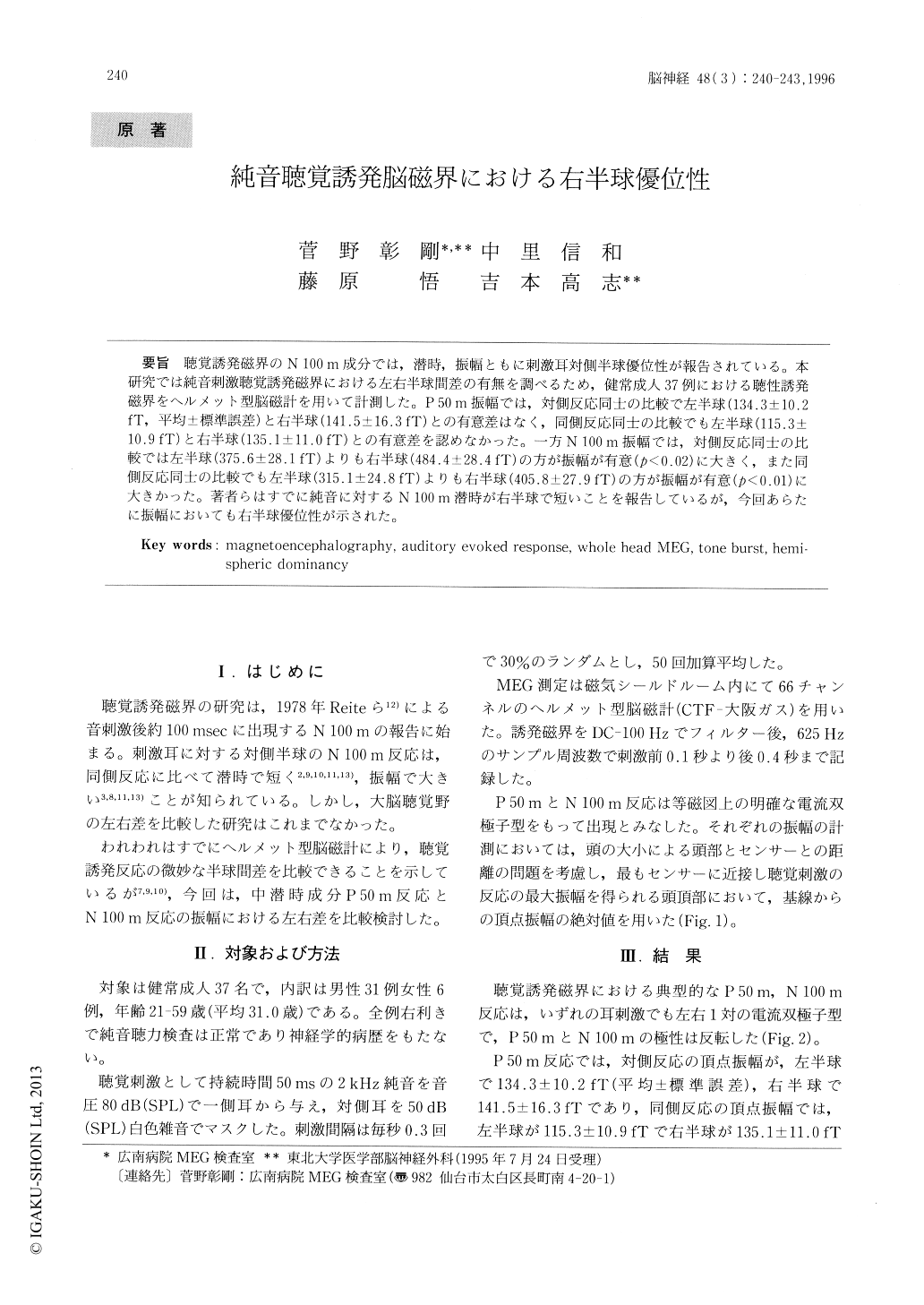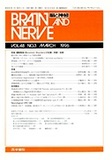Japanese
English
- 有料閲覧
- Abstract 文献概要
- 1ページ目 Look Inside
聴覚誘発磁界のN100m成分では,潜時,振幅ともに刺激耳対側半球優位性が報告されている。本研究では純音刺激聴覚誘発磁界における左右半球間差の有無を調べるため,健常成人37例における聴性誘発磁界をヘルメット型脳磁計を用いて計測した。P50m振幅では,対側反応同士の比較で左半球(134.3±10.2fT,平均±標準誤差)と右半球(141.5±16.3fT)との有意差はなく,同側反応同士の比較でも左半球(115.3±10.9fT)と右半球(135.1±11.0fT)との有意差を認めなかった。一方N100m振幅では,対側反応同士の比較では左半球(375.6±28.1fT)よりも右半球(484.4±28.4fT)の方が振幅が有意(p<0.02)に大きく,また同側反応同士の比較でも左半球(315.1±24.8fT)よりも右半球(405.8±27.9fT)の方が振幅が有意(p<0.01)に大きかった。著者らはすでに純音に対するN100m潜時が右半球で短いことを報告しているが,今回あらたに振幅においても右半球優位性が示された。
It is well known that the auditory evoked N100m response is dominant in the contralateral hemi-sphere to the stimulated ear: N100m latency is shorter and N100m amplitude is larger in the contralateral hemisphere than the ipsilateral hemi-sphere. Interhemispheric asymmetry of the N100m responses were reported in terms of the equivalent dipole localization: the right hemispheric N100m dipole is more anterior to the left hemispheric dipole. In the present study, we investigated inter-hemispheric asymmetry of the auditory evoked P50m and N100m response in terms of signal ampli-tude.

Copyright © 1996, Igaku-Shoin Ltd. All rights reserved.


